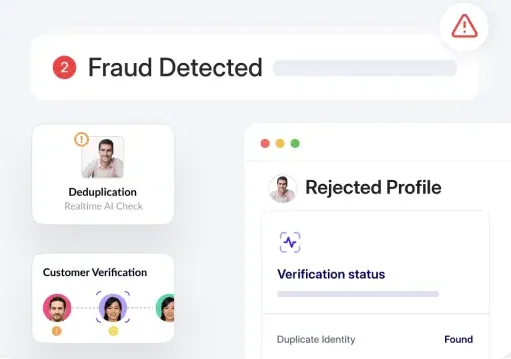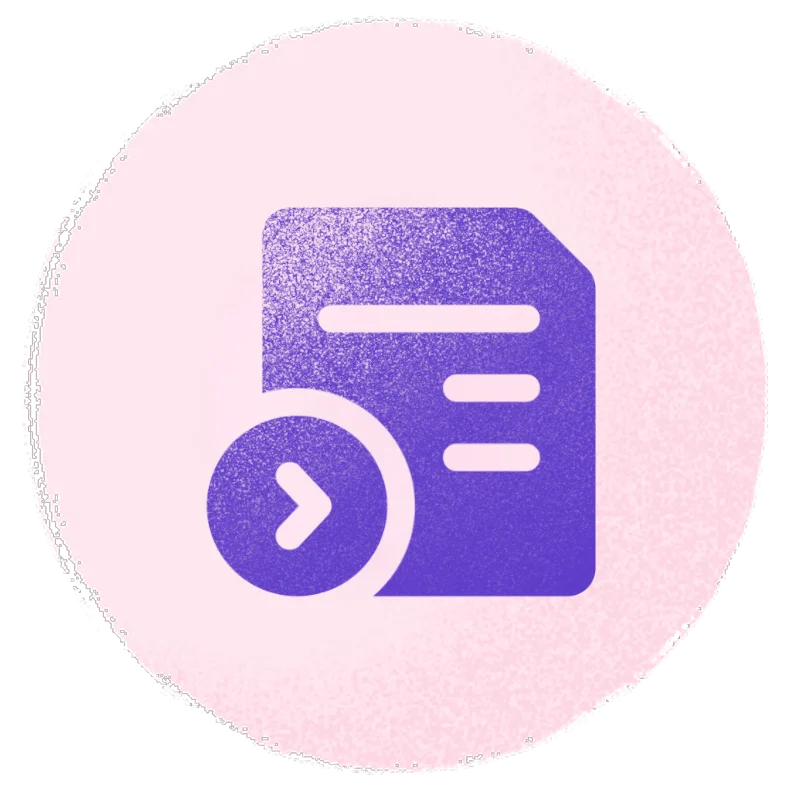Fraudulent activities, including e-commerce scams, insurance fraud, cybersecurity threats, and financing fraud, pose significant risks to both individuals and companies across various industries such as retail, insurance, banking, and healthcare.
To combat these risks, businesses increasingly adopt advanced fraud prevention technologies and robust risk management strategies that depend on Big Data. For instance, predictive analytics models, alternative data sources, and advanced machine learning techniques empower decision-makers to develop innovative approaches and methodologies to proactively prevent fraud.
These technologies analyze large volumes of data to identify patterns and anomalies in transactions that indicate fraudulent behavior, allowing businesses to take proper action.

Understanding big data analytics
Big data analytics involves processing and analyzing large and complex data sets, known as big data, to extract valuable insights. This field helps in the discovery of trends, patterns, and correlations within vast amounts of raw data, assisting analysts in making informed decisions.
By using the growing data generated from various sources, such as IoT sensors, social media, and even financial data from institutions, transactions, and smart devices, organizations can get actionable insights through advanced analytic techniques. Tools like Salesforce ETL further enhance this process by streamlining data extraction, transformation, and loading, ensuring seamless integration of diverse data sources for analytics.
In response to current challenges, companies are shifting to advanced data analytics techniques for fraud prevention technologies and risk management strategies that use Big Data. Techniques like predictive analytics, alternative data, and machine learning are helping create new ways to prevent fraud.
Applications of big data analytics in fraud detection
Here are a few applications of big data analytics in fraud detection:
Real-time fraud monitoring
One of the main benefits of using big data in fraud detection is the ability to perform real-time analytics and monitoring. Traditional methods of detecting fraud often depend on past data analysis, which may not be fast enough to stop advanced fraudsters.
Big data analytics supports instant analysis of transactions, user behavior, and patterns, allowing organizations to monitor, detect, and respond to potential fraud as it happens.
Pattern recognition
Integrating machine learning algorithms with big data analytics boosts insurance fraud detection analytics and prevention. These algorithms learn from historical data, identifying patterns and trends linked to fraudulent activities.
As they continuously evolve, machine learning models become highly effective at predicting and against fraudulent activity and preventing fraud before it happens, offering a proactive defense mechanism.
Anomaly detection
Big data allows advanced behavioral analytics, which involves analyzing user behavior patterns to identify anomalies. By specifying a baseline of normal user behavior, organizations can quickly detect deviations that may indicate fraud.
This approach to payment fraud analytics is specifically effective in online banking, e-commerce, and other digital transactions, where abnormal patterns can be easily identified and investigated.
Predictive modeling and risk assessment
Predictive models can assist organizations in predicting fraud scenarios and identifying suspicious activities. These models can include variables such as transaction volume, velocity, or customer behavior patterns to evaluate the likelihood of fraud.
With these insights, organizations can consider the risk and allocate the resources to detect fraud more effectively and take proactive steps to prevent fraudulent activities before they occur.
Examples of big data analytics for fraud detection and prevention
To demonstrate further investigation into how big data analytics improves credit card fraud detection and prevention in banking and finance. Here are these real-world applications:
- PayPal: Using machine learning to analyze billions of transactions, PayPal detects potentially fraudulent transactions and activities in milliseconds, guiding significant savings and improved customer satisfaction.
- Mastercard: Using data mining to identify fraud patterns across millions of merchants and cardholders, Mastercard offers fraud prevention solutions like Mastercard Safety Net and Mastercard Identity Check.
- HSBC: By integrating and analyzing data from customer profiles, data records, transaction records, and external databases, HSBC combats money laundering and financial crime using techniques such as network analysis and commodity resolution.
- American Express: Using natural language generation and geospatial analysis, American Express analyzes customers’ spending habits, preferences, and locations to create personalized fraud alerts.
Challenges and considerations
Here are some challenges to using big data for fraud detection.
Data quality and integration issues
Ensuring high-quality and reliable data involves techniques such as data cleaning, validation, and integration. These processes are important to make sure the data used for financial fraud analytics and detection is accurate and trustworthy. Many organizations face integration issues while using big data analysis, for those who don’t have advanced high-quality computers. Consider using the latest computers to get along with these technologies.
Privacy and security concerns
Maintaining the privacy and security of data is necessary. This requires following regulations and ethical standards and implementing measures like encryption device data mine, anonymization, and access control to protect sensitive information. Find tools that will help you maintain your privacy and keep compliance with all rules and regulations.
Regulatory compliance requirements
Organizations must adhere to various regulatory compliance requirements to maintain correct data handling. They must also keep themselves current on applicable laws and standards and build compliance measures into data management practices.
Benefits of big data analytics for fraud detection
Here are some of the benefits of big data analysis for fraud detection:
Improved accuracy and efficiency in fraud detection
Big data analytics improves the accuracy and efficiency of fraud detection by processing vast amounts of data quickly. This capability of big data fraud detection allows organizations to mine call data records and identify fraudulent activities more accurately and efficiently.
Reduced false positives and false negatives
By using advanced analytic techniques, big data analytics reduces false positives for legitimate transactions and false negatives for fraudulent transactions. This guarantees that genuine transactions are not mistakenly flagged as fraud and that actual fraudulent activities are accurately detected.
Faster response times and better decision-making
The real-time processing capabilities of big data analytics allow faster response times to potential fraud. This quick data analysis also supports better decision-making, evolving fraud tactics, and allowing organizations to act accordingly to prevent fraud.
Easier compliance with regulatory standards
Big data analytics helps organizations comply with regulatory standards by providing robust data management and data security measures. It assures that data handling practices meet regulatory requirements, reducing the risk of non-compliance. Implementing Salesforce data security further strengthens these efforts by ensuring that sensitive information is securely stored, accessed, and managed within the Salesforce ecosystem.
Best practices for big data analytics in fraud detection and prevention
To maximize the benefits of fraud data analytics and address the challenges of big data analytics for fraud detection and prevention in banking and finance, consider the following best practices:
- Define clear objectives and metrics: Set targets people can work towards Your fraud data analytics will, therefore, be specific to helping achieve these goals, rather than general and perhaps less relevant.
- Implement a robust data governance framework: Develop a comprehensive data governance framework that includes policies, processes, roles, and responsibilities for maintaining data quality, privacy, security, and compliance. This framework should be flexible enough to adapt to evolving regulations and business needs.
- Adopt an integrated approach to data management: This approach uses various data sources, types, formats, and technologies, allowing for more comprehensive and accurate fraud detection capabilities.
- Apply a combination of analytical methods: Use a combination of testing and confirming analytical methods to find patterns that balance discovery and validation. This approach allows you to find new fraud patterns while confirming the validity of known patterns, balancing complexity with simplicity.
- Implement a continuous improvement process: Set an iterative process of testing, learning, and improving fraud detection lies. This continuous cycle helps you adapt to the ever-changing nature and dynamics of fraud, assuring your fraud detection solutions remain effective.
By following these best practices, organizations can improve their ability to detect and prevent fraud, using Big Data and advanced analytics techniques to stay ahead of evolving threats.
Conclusion
Throughout this article, we’ve explored the role of big data analytics in fraud detection and prevention. We’ve discussed how various techniques, such as real-time fraud monitoring, pattern recognition, anomaly detection, and predictive modeling, can significantly improve the accuracy, efficiency, and effectiveness of fraud detection efforts.
Real-world examples from industry leaders like PayPal, Mastercard, HSBC, and American Express have shown the practical applications, potential threats, and benefits of using Big Data analytics tools in combating fraudulent activities.
The future of big data analytics in fraud detection and prevention looks promising, with continuous advancements in machine learning, AI, and data processing technologies. These developments will further refine and improve the capabilities of fraud detection software, making them more adaptive and robust.
Stay ahead of fraud and protect your business with advanced solutions from HyperVerge. Discover how HyperVerge’s advanced technology can help you prevent fraud more effectively. Learn more here.





















